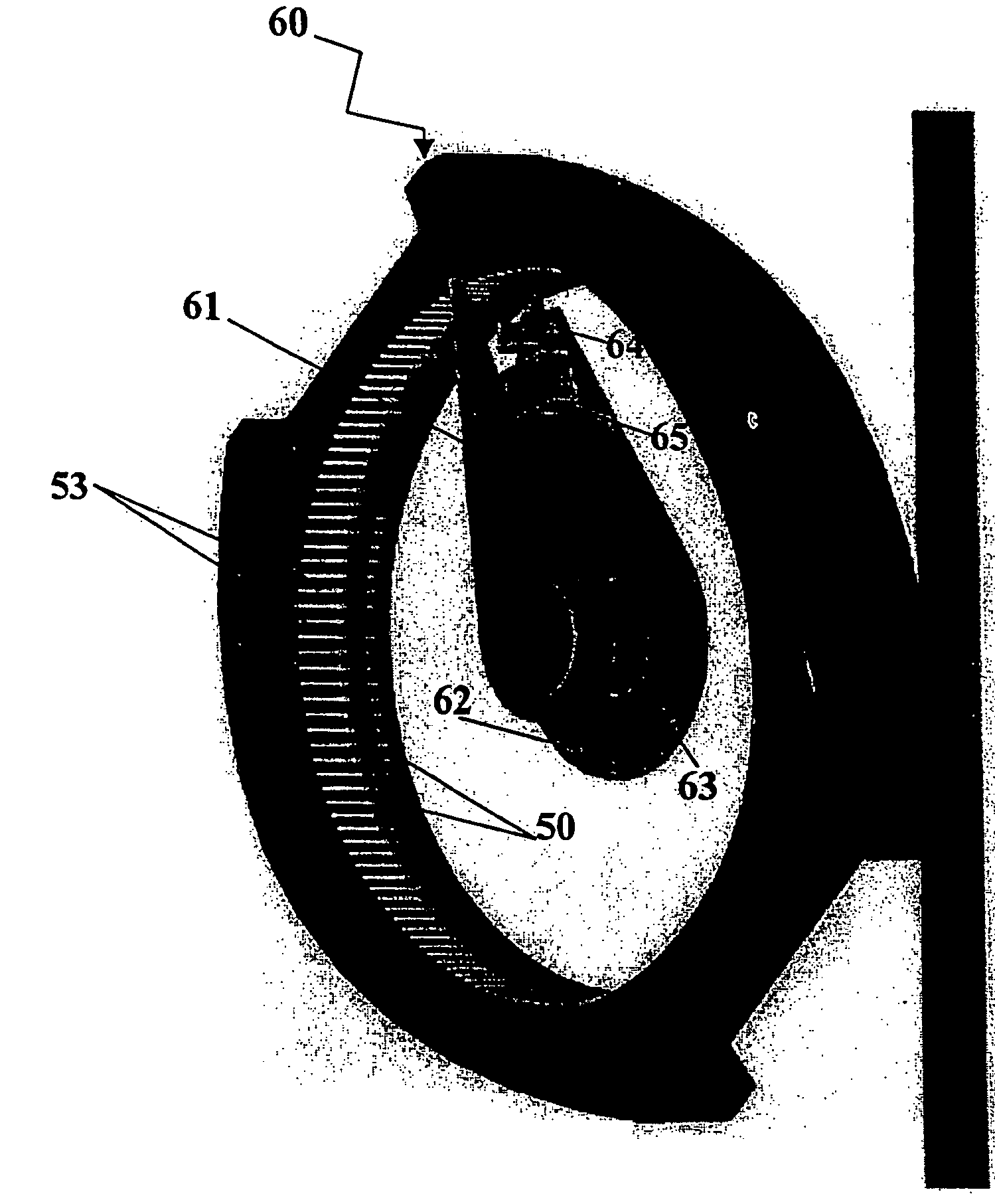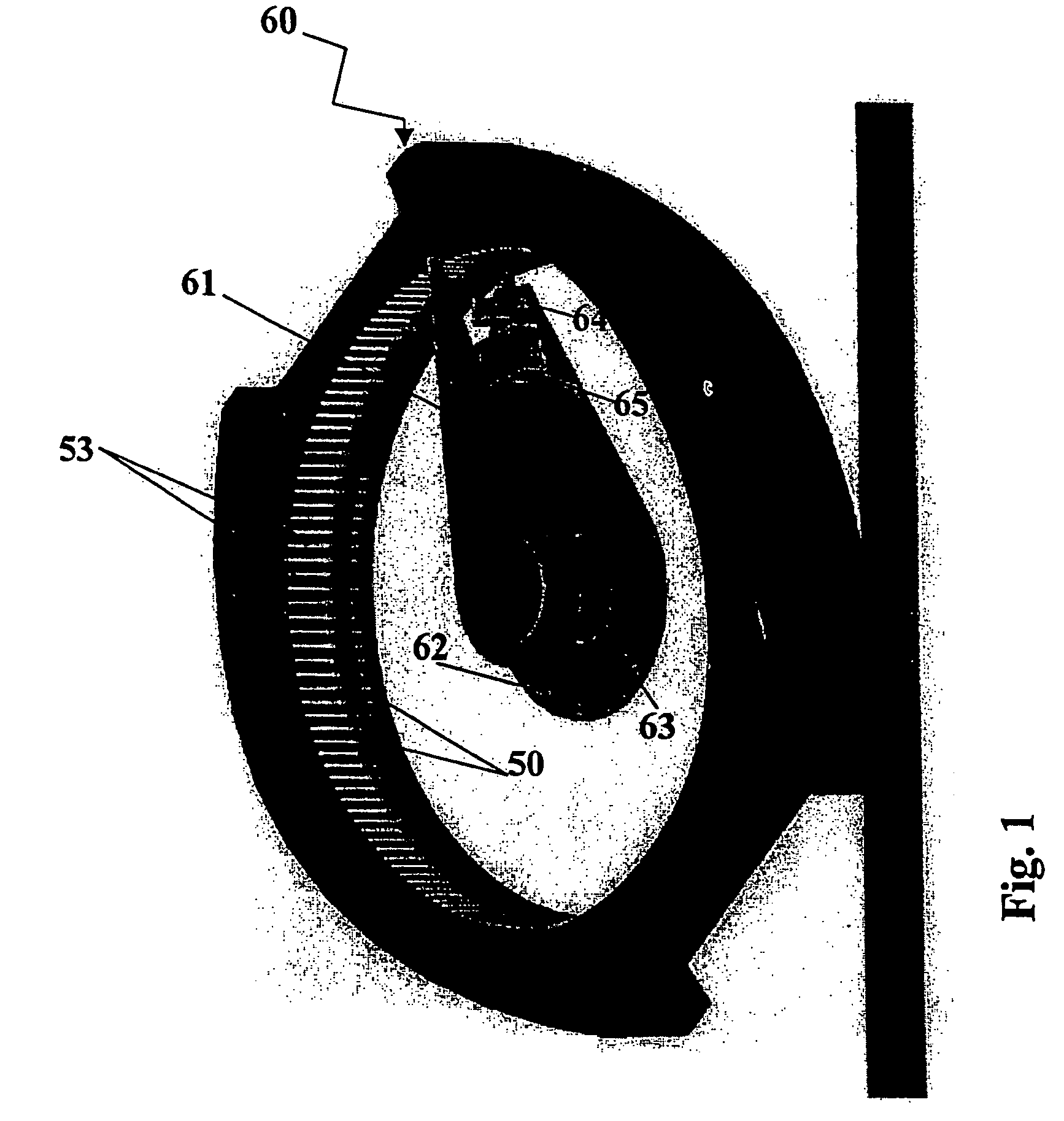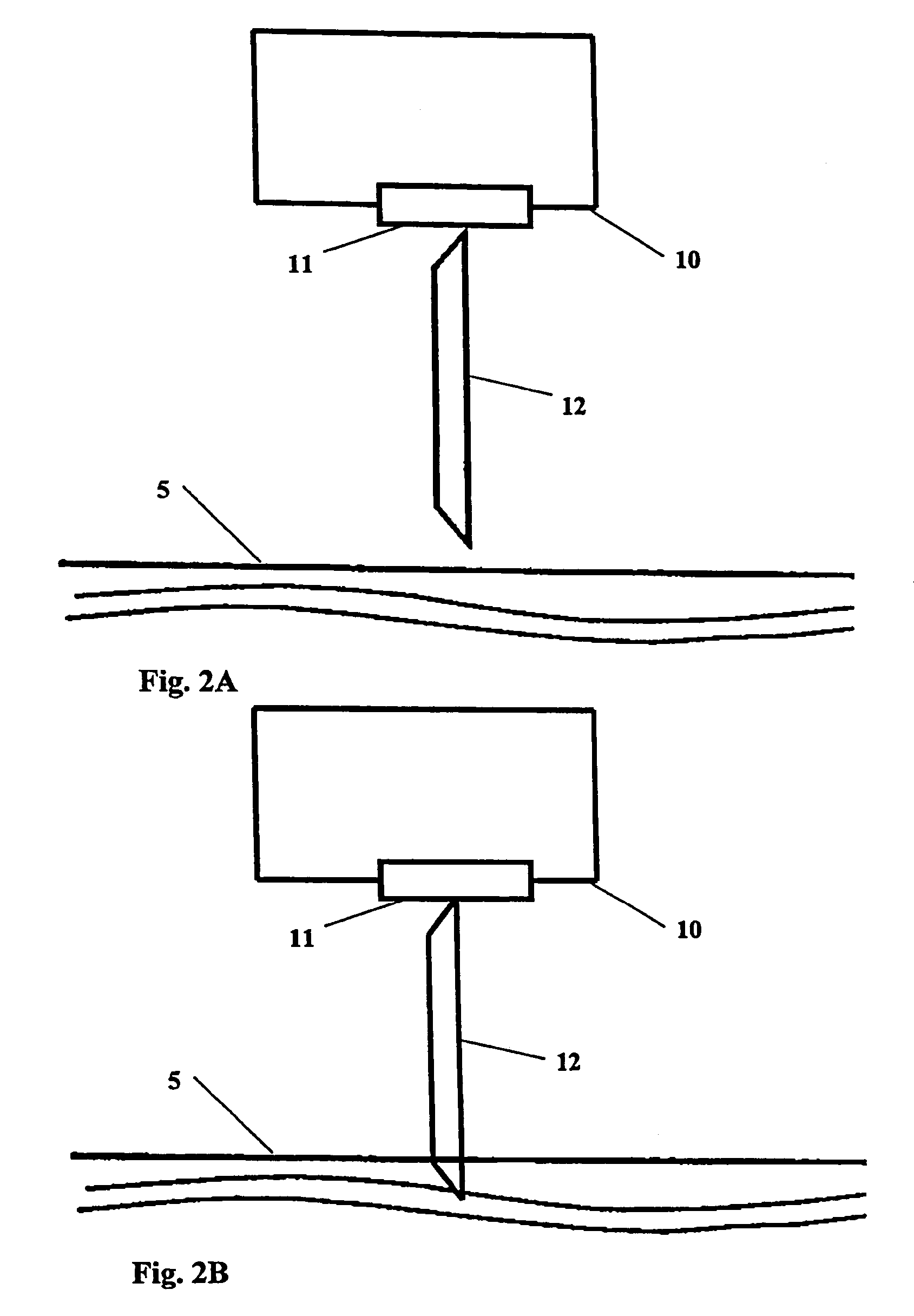Analyte monitor
a technology of analyte monitor and analyte, which is applied in the field of analyte monitor, can solve the problems of loss of quality of life and corresponding care cost, no proposed solution has proved entirely satisfactory, and no solution has been proposed
- Summary
- Abstract
- Description
- Claims
- Application Information
AI Technical Summary
Benefits of technology
Problems solved by technology
Method used
Image
Examples
Embodiment Construction
[0020]FIG. 1 shows an interior view of a relatively small analyte monitoring device which can be worn strapped or taped to an appropriate tissue from which a biological fluid can be drawn via relatively short, small diameter needles for analysis. The device can be, for example, just over two inches in diameter.
[0021]Monitoring device 60 contains a plurality of needles 53, in this case sufficient to conduct a number of analyses (e.g., three to twenty-four) on each of a number of days (e.g., twenty, or forty, or more). The needles are associated with chambers 50 in which, in this embodiment, the analyses are conducted. Such chambers are optionally windowed. Axle 63 rotates platform 62 and arm 61 to align the arm with a needle 53 and the detector 64 on the platform with an associated chamber 50. The detector can contain, for example, a light source and a light detector. The light detected can be used to calculate an absorbance for sample in the chamber 50 (where the light path is refle...
PUM
 Login to View More
Login to View More Abstract
Description
Claims
Application Information
 Login to View More
Login to View More - R&D
- Intellectual Property
- Life Sciences
- Materials
- Tech Scout
- Unparalleled Data Quality
- Higher Quality Content
- 60% Fewer Hallucinations
Browse by: Latest US Patents, China's latest patents, Technical Efficacy Thesaurus, Application Domain, Technology Topic, Popular Technical Reports.
© 2025 PatSnap. All rights reserved.Legal|Privacy policy|Modern Slavery Act Transparency Statement|Sitemap|About US| Contact US: help@patsnap.com



